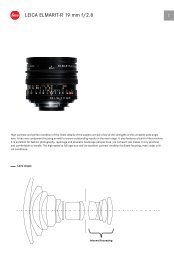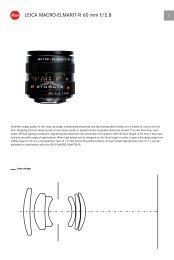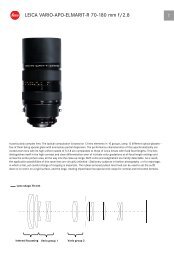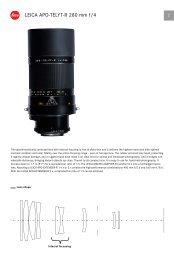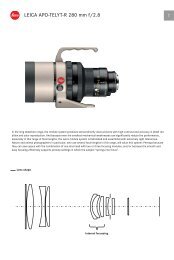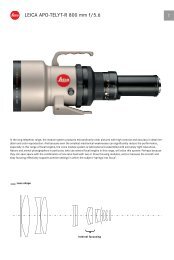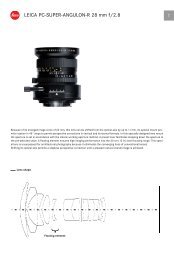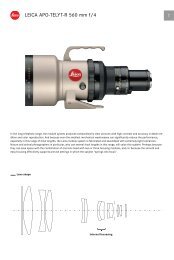Leica M System
Leica M System
Leica M System
Create successful ePaper yourself
Turn your PDF publications into a flip-book with our unique Google optimized e-Paper software.
M <strong>System</strong> 16 / 17<br />
Fifty years of compatibility Back in the 1950s, <strong>Leica</strong> engineers<br />
demonstrated their foresight by creating a timeless standard with the<br />
<strong>Leica</strong> M bayonet. This guarantees system compatibility, even with<br />
today’s digital M8. Because this standard has been maintained, almost<br />
all M lenses can be used on the digital <strong>Leica</strong> model. However, system<br />
compatibility does not mean standing still – it is all about evolution.<br />
The new 6 bit-coding means that the LEICA M8 can identify the lens<br />
type fitted and use this information to set up subsequent shots. Compatibility<br />
does not stop with the bayonet – it also applies to the extensive<br />
range of accessories. Even the choice of JPEG and DNG (RAW data<br />
format) as the digital image formats on the M8 is designed to ensure<br />
image quality, future compatibility and secure archiving of the digital<br />
data. More than ever, choosing the M system means choosing lasting<br />
values.<br />
<strong>Leica</strong> is geared up for the future, yet at the same time maintains its<br />
principle of system compatibility. The 1954 bayonet and the current 6 bitcoded<br />
bayonet were produced decades apart but there is nothing to<br />
separate them. The new, extended M bayonet allows all non-coded<br />
lenses to be used on the M8. Likewise, the new 6 bit-coded lenses can<br />
be used on analog M cameras with no restrictions.<br />
The 1954 Bayonet<br />
The 2006 Bayonet



